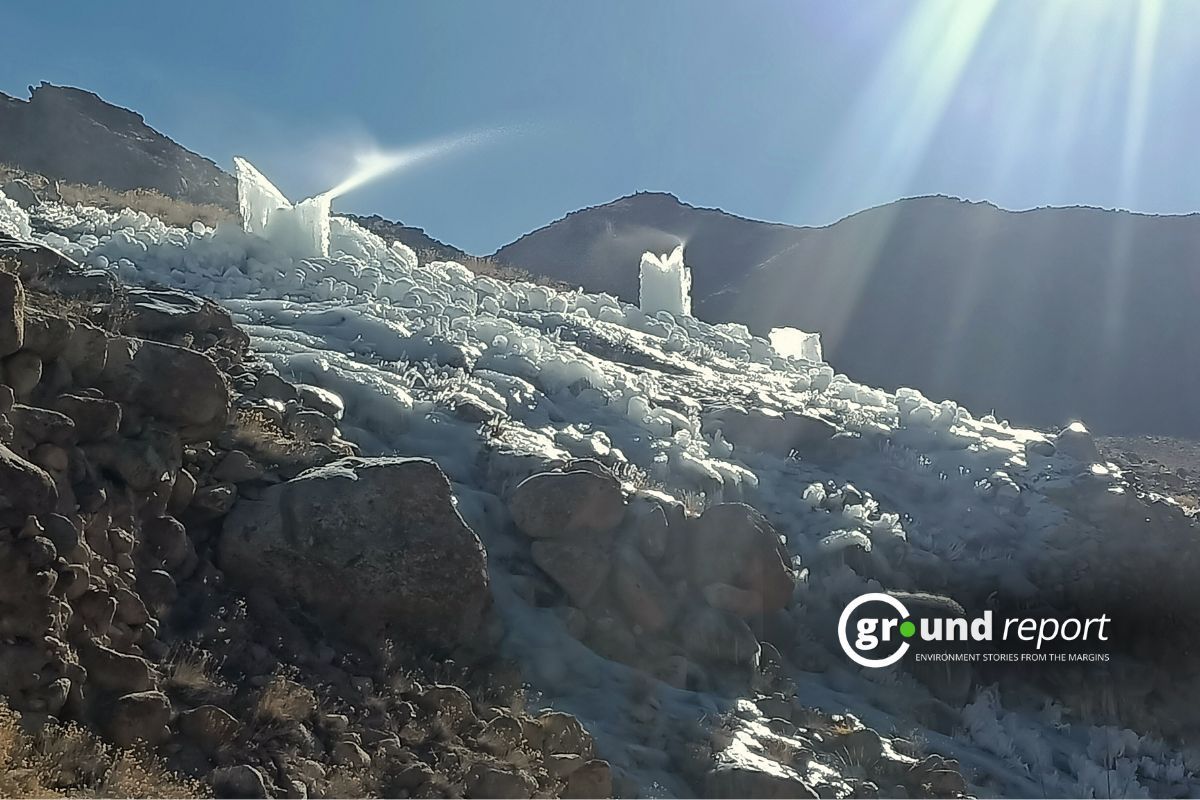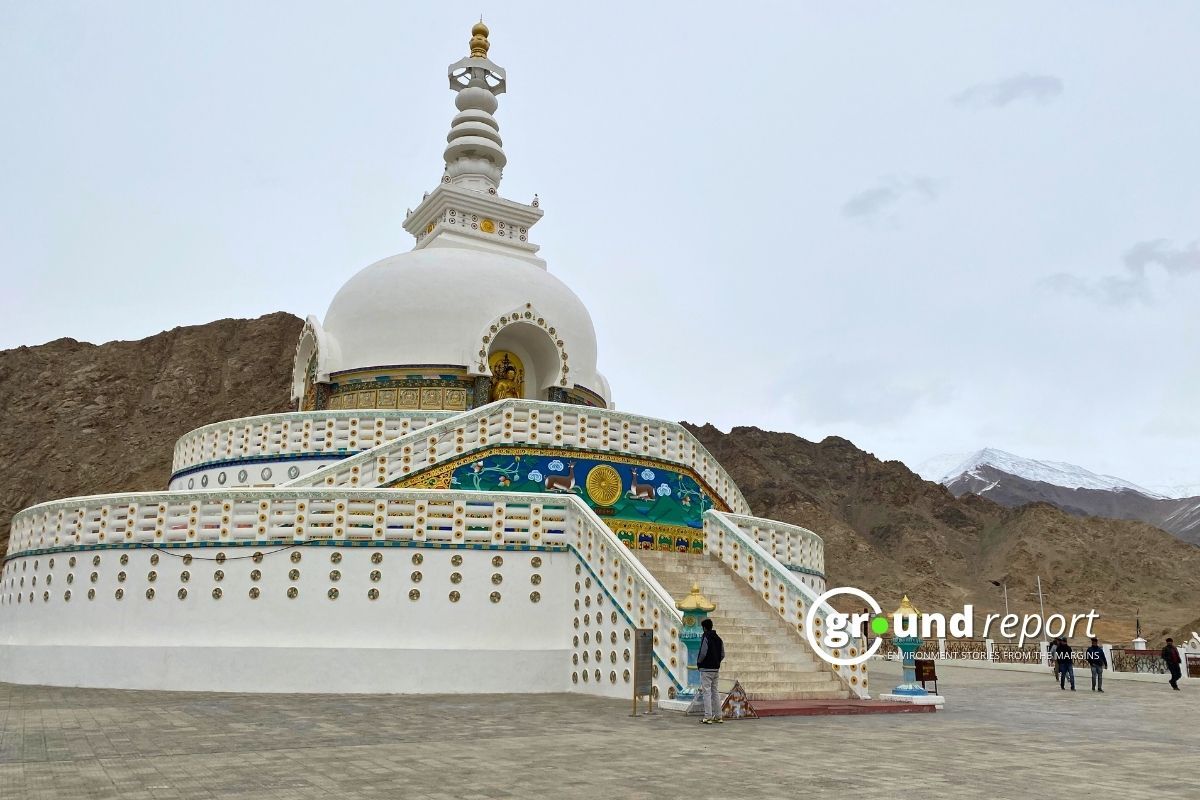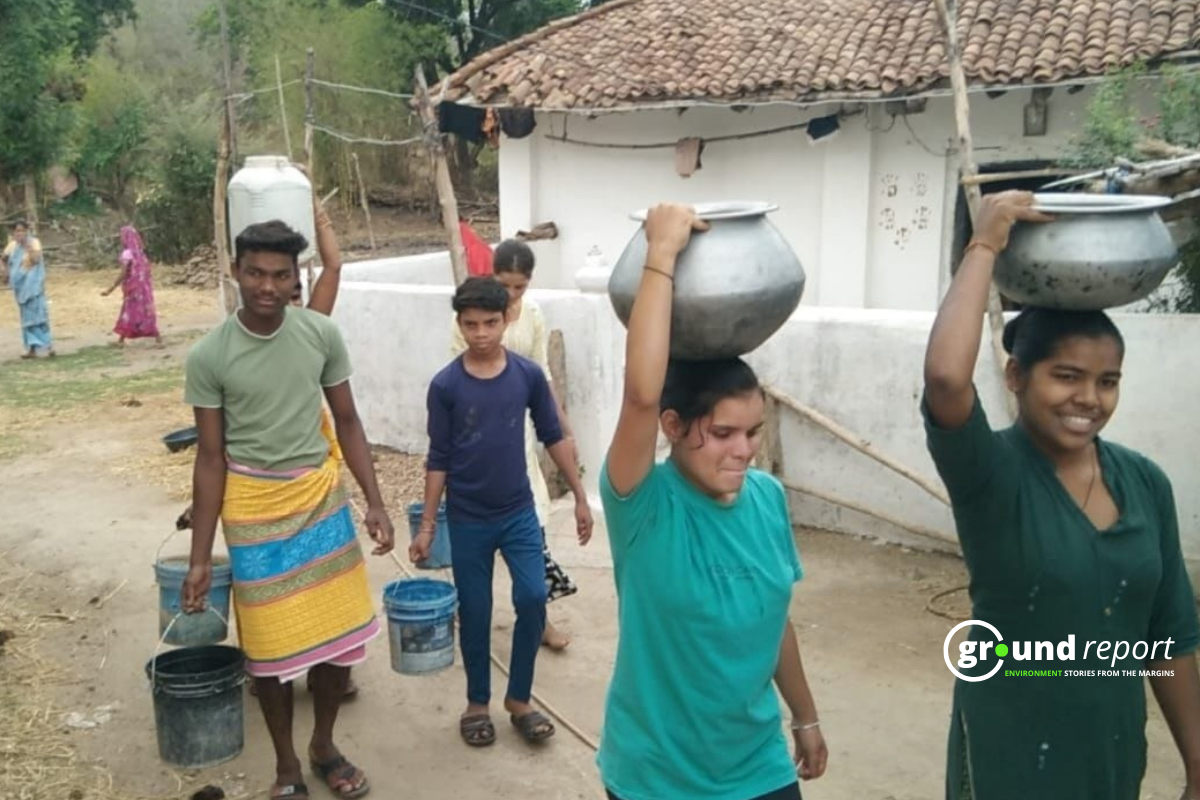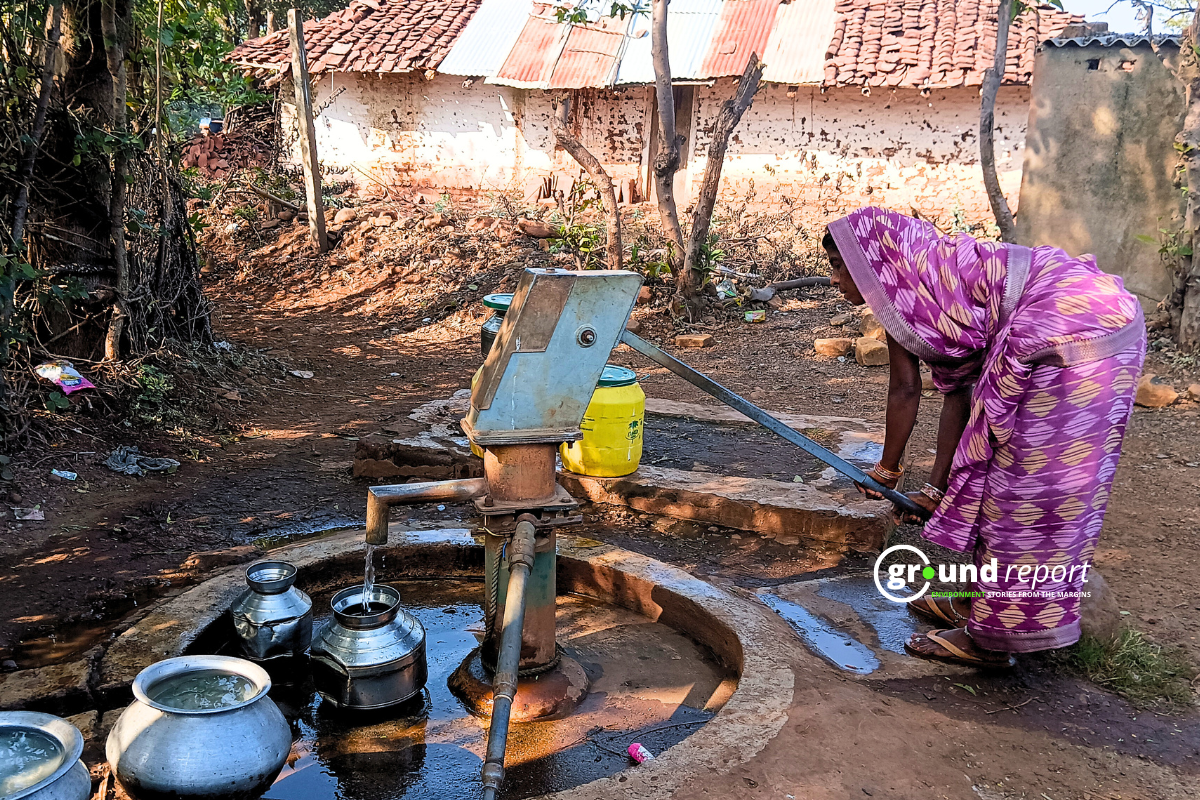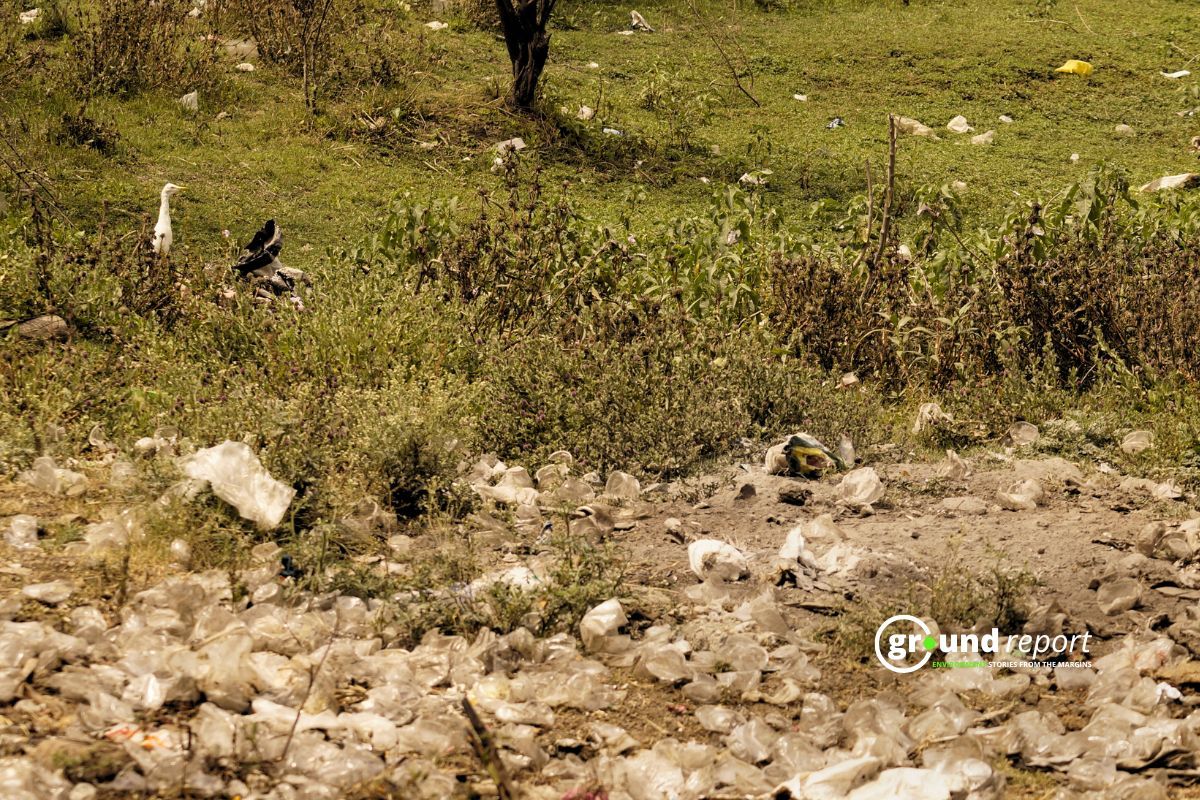Ladakh, India’s high-altitude cold desert and the Himalaya’s nature paradise, is facing the heat of climate change and an influx of tourism in its water availability. The people of Ladakh have been feeling the signs of climate change, as the change in weather patterns has resulted in melting glaciers, droughts, and flooding. With the release of 3 Idiots in 2010, Ladakh saw a threefold increase in the number of tourists. This influx placed an unprecedented burden on the desert district’s water supplies, ecology, and tradition. Water consumption, especially in the Ladakh capital Leh, has been on the rise due to the soaring number of tourists during the summer and a steep rise in the number of big hotels in the region. The valleys of Ladakh rely on snowfall and glaciers for their water needs.
The picturesque traditional Ladakhi houses are built from mud and stones. The traditional homes’ flat roofs are made of wood from two kinds of trees—poplar and willow—designed to withstand the heavy weight of winter snow and keep the indoors warm. However, the increasing temperature and heavy summer rainfall meant that the locals switched to concrete structures to protect their homes from water seeping in. According to the World Weather Online, Ladakh’s average rainfall during summers has gone from 30 mm in 2009 to 140 mm in 2023, with the average number of rainy days going up by 12% in this period. Unlike other landscapes, Ladakh’s rocky terrain has no natural mechanism to ingest the rainwater, pushing the rainwater downwards to form a flood.
Here are 5 unique ways the Ladakhi people have been practicing for generations to save water:
Chuspon system
This community-led, self-governing model chuspon system is an efficient community system. In this system, a village’s water distribution is overseen by one person called the water lord. Water lord facilitates the local governance, maintenance, and equitable distribution of precious water resources. A chupson, which refers to the individual as a water lord in the local language, should possess extensive knowledge of customary duties, rights and responsibilities related to water management. They must monitor the water reservoir from 8 pm to 3 a.m., ensuring water distribution (irrigation) and harmony among farming communities.
Ice stupa project
Ladakh’s environmental activist and engineer, Sonam Wangchuk, built an ingenious artificial glacier using pipes, gravity, and nighttime temperatures called Ice Stupa. Ice stupa is a form of glacier grafting technique in the form of conical-shaped ice heaps. The Ice Stupa freezes the water at night, creating glaciers that grow each day. A network of pipes to divert meltwater into artificial lakes on shaded sides of the mountain. This created 11 reservoirs that supplied water to 10,000 people, releasing up to 5,000 litres of water each day.
The idea is also to conserve this tower of ice as long as possible, into the summer, so that as it melts, it feeds the fields until the real glacial melt waters start flowing in June.
Crop Diversification and Traditional Irrigation Systems
Ladakhis have devised intricate systems of diverting and managing water from streams and rivers to irrigate their fields. One of the most notable systems is the use of “kuls”. These are small channels that transport water from melting glaciers to fields and orchards. They also practice various water conservation methods, such as terracing fields to prevent soil erosion and retain moisture, using mulch to minimize evaporation, and employing efficient irrigation techniques such as drip irrigation.
Dry Toilets
Unlike the modern toilets that use between 6 and 11 litres of water per flush, the dry toilets that the Ladakis have been using for generations require no water. Their toilets are double-storeyed. The users squat on the first floor in a big pit, which is then shovelled with ash, soil, or hay to ensure there is no odour. The waste matter decomposes and converts into human manure over time. The human manure is then used as fertilizer to cultivate crops. Dry toilets are an ecological solution to a water-strapped environment such as Ladakh.
Low-water-cost architecture
Ladakh’s traditional home construction is often considered low-water architecture as it relies on techniques that minimize water usage in an arid environment. They traditionally construct using locally available materials like mud, stones, and wood. These materials require minimal processing and transportation, reducing the water footprint associated with construction.
The thick walls are made of mud or stone, providing insulation and maintaining a comfortable indoor temperature in all seasons, without the need for water-dependent cooling mechanisms. The flat roofs in traditional Ladakhi homes are made of compacted mud. This helps to collect rainwater during the rare precipitation events in the region, which can be stored and used for various purposes. The home is also designed around a central courtyard, providing natural ventilation and shade, reducing the need for mechanical cooling systems that would require water for operation.
Need for long-term solutions
Despite the downpour, this Himalayan region is battling water scarcity. The Phyang glaciers—both Phyang and Leh glaciers—are receding rapidly. Several villages in the region are facing erratic weather. The changing temperature has introduced the local farmers to the use of chemical fertilizers to ward off the increasing insects and pests. The primary source of water, the Phyang River stream that joins the Indus River at Phey, is heavily exposed to excessive chemical fertilizers from nearby farms. Furthermore, the influx of tourists has introduced and expanded the use of western toilets, away from dry toilets, among the Ladaki household, homestays, and hotels.
In Ladakh, there are no long-term solutions to get more water, and sub-zero temperatures make the organic waste remain undecomposed for most parts of the year. Mixing it with the water sources has deteriorated the quality of the stream water. According to the director of the Ladakh Ecological Development and Environmental Group Nordan Otzer, Ladakhis consume very little water—about 20 litres of water a day, compared to at least 75 litres used by tourists. This is because the locals are accustomed to a life where water is scarce and sacred. Most households, hotels, and guesthouses in Ladakh have their own private borewell to meet over 80% of their water demand. The groundwater resources are extracted without regulation. As the springs within Leh town have dried up, groundwater exploitation is of great concern. However, there are traditional and unique practices that locals engage in to conserve their precious water resources.
Keep reading
Follow Ground Report for Environmental News from India. Connect with us on Facebook, Twitter, Koo App, Instagram, WhatsApp and YouTube. Write to us at GReport2018@gmail.com and subscribe to our free newsletter.
Don’t forget to check out our climate glossary, and learn difficult environmental terms in simple language.

